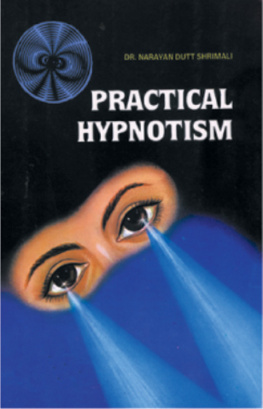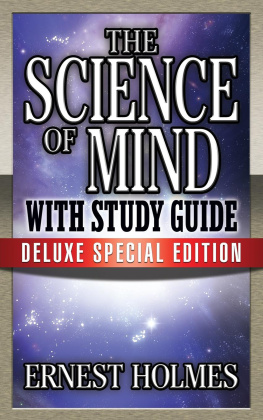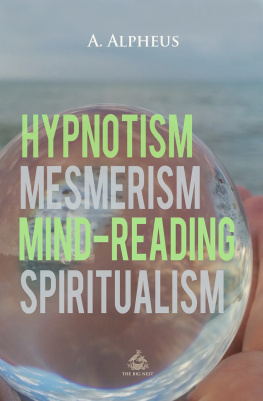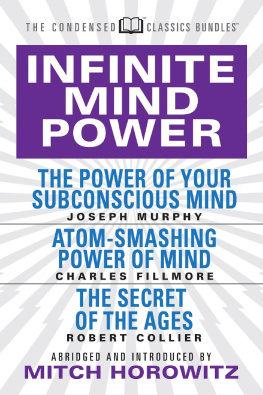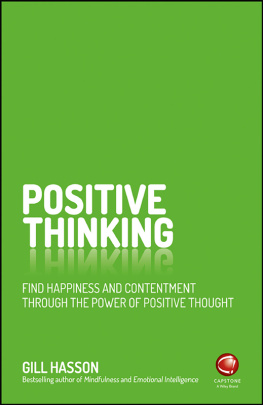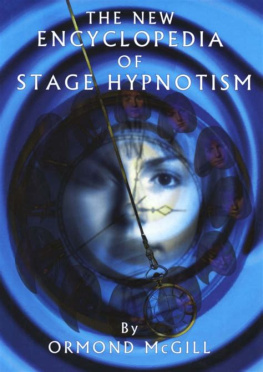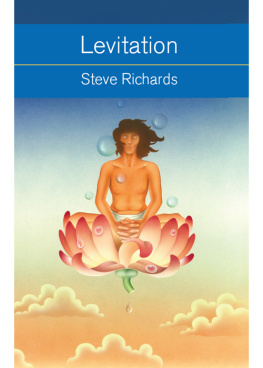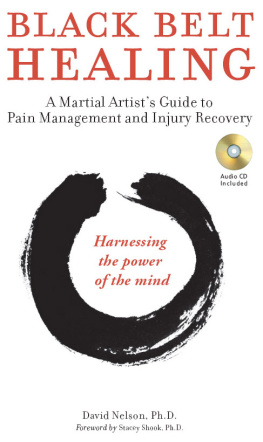1. INITIATION
Hypnotism is the oldest knowledge of India. It is rooted into the deepest traditions. A spiritual outlook has always characterised the Indian life. It was for this reason philosophy and spiritualism figured importantly in every walk of the Indian life. Hypnotism was also called Pran in ancient Indian literature.
After its initial phase of glory this knowledge mostly remained buried on obscurity. It was pushed into the realm of witchcraft, which always remained as the special preserve of certain families.
In the West, however, hypnotism was an object of curiosity and mystery. The people of the West had a keen inclination to investigation and research. When they learnt all about the miracles of the Indian seers, they were simply amazed. They visited India, and saw for themselves that the yogis could achieve the impossible. By a mere touch of their fingers, they would cure patients of their ailments, communicate knowledge about persons located far away and see anything anywhere all over the world as clearly as they saw the person sitting opposite.
Not only this, they delved deep into the past and dug out facts long embedded into the unknowable. Indeed the entire exercise stunned the people of the West, who, for the first time, found cause to realise that the knowledge beyond touch and sight was as real as the physical sciences, if not a lot more miraculous.
The human physique is a complex of certain strange and inexplicable phenomena, which have always baffled the scientists. They dissected the physique to locate its mystery. And yet they could not identify the physique in its entirety. Nonetheless they discovered in the human body such elements as might not be visible and yet nobody could disprove their existence. The mind, for example, is such an element. It might not be seen but nobody could disprove its existence. Anatomists dissected the body and yet they could not locate any limb known as mind. However they conceded that this part was the most crucial constituent of the body without which it would be reduced to mere bones and flesh devoid of emotions and feelings.
It should be essential to know the mind before one seeks to know all about the physique. The mind is said to be the most forceful constituent of the body. Often it has been seen that a person by virtue of the force inherent in the mind can achieve seemingly impossible things. By dint of sheer will-power and perseverance the individual succeeds in negotiating the most difficult turns in his life. Take, for example, the case of a dying man whose son is posted far away. He is determined to see his son before death. By virtue of this staying power he continues to live long enough to see his son, although the physicians had given up all hopes. It was often seen that a determined person like him managed to live on for another 3 to 4 days. The moment the son arrives, the determination disappears and the man dies the next moment. It was only on the strength of the forceful mental power that he could linger on.
No wonder Indian yogis spent most of their time to comprehend this elusive elementthe mind. They looked within and went deeper into the inner self. The accomplishments they came out with have been the object of envy throughout the world. The Western philosophers, on the other hand, concerned themselves only with mere externals. The major thrust of their explorations was calculated to tilt the sensuousness of the physical body. Doubtless they scored some significant achievements in the realm of the physical world. As they went closer to certain accomplishments in the physical world, they found themselves, no less by the same process, far away from the essential elementthe mind.
It was only when they saw Indian accomplishments and comprehended Indian methodology that the West resiled from its unproductive methodology and trained its sights on the internal world of the being. Credit must go to the renowned Swiss scientist Dr. Enton Mesmer who was the first Western thinker to have initiated studies in this methodology and brought off a scientific study of hypnotism. It was after him that this sciencemesmerismderived its name.
Dr. Mesmer was born on 23 May, 1734. Following a close study of the achievements of the Indian yogis he began to realise that the entire creation, both animate and inanimate, was permeated with an invisible power. It was, he felt, imperative that this invisible power be identified and creatively used. For he began to see that this invisible power being ubiquitous was extraordinarily influential in respect of the animate world, and more so, in relation to man.
Every human organism, he also felt, was endowed with a magnetic power, whose presence one felt when two persons meet. The meeting draws the latent power out. He called it animal magnetism operating as it did in both negative and positive forms. In males the positive form and in females the negative form operate.
When the two forms meet each other, the resultant form grows into a full circle which is an unmistakable indicator of its full force. Take, for instance, the sudden glow in the eyes of a certain man when he chances upon a certain woman. Generally the reaction is due to a special electric current which heaves his body up and down. The positive magnet longs to meet or touch the negative magnet. It is only through this process do we obtain a full circle. As Dr. Mesmer explained, birds and animals, too, react in the same manner. Even when two positive or two negative currents meet, a particular type of magnetic power gets generated.
As Dr. Mesmer explained, the entire organism is permeated with magnetic power. When we give a hand-shake to somebody, we feel either overcome or overbearing. What accounts for this varying range of feelings is that one may have more magnetic power than the other.
In 1775, when Dr. Mesmer first made public his findings, a great commotion overtook Europe. It was an age characterised by blind faith. While some persons commended Dr. Mesmers findings, others pronounced it to be anti-religion and contrary to natural phenomena. The Austrian Government took it as big crime and ordered him to leave the country within 48 hours.
Exiled from Austria, Dr. Mesmer settled down in Paris where he established a regular clinic. By then he had successfully carried out many experiments and also proved that many chronic diseases could be cured with the aid of the magnetic power.
He selected a room of the clinic and magnetised its walls. The magnets affixed on the walls were invisible, and yet the room exuded an attraction of its own. Also he got a sweet-smelling scent sprayed all over the room. Barely outside the room he arranged soft music which added to the pleasant atmosphere in the room. Patients suffering from chronic diseases were made to sleep in this room. He planted a suggestion in the patients that they were recovering fast. The interaction between the magnets planted on the walls and the magnetic power inherent in the bodies of the patients gave a lot of relief to the resting patients. Besides, in the sheer delight of the room patients often enough used to forget their ailments. For medicines he gave them plain water, though bottled in attracting phials. He saw to it that all kinds of high-sounding labels were pasted on the phials so that the patients had the satisfaction of being attended to in a special manner.
The experiment cured many patients and won him popularity all over France. Many high-ranking officers and ministers visited the clinic and went back fully recovered.
While conducting these experiments, Dr. Mesmer felt that the finger-tips had in them a high concentrate of magnetic power which otherwise permeated the whole body. He also felt that his own finger-tips very often gave much relief to the patients through touch. He used to notice that the patient got a kind of relief when he touched with his finger-tips either the location of the wound or heart as the case might be.

